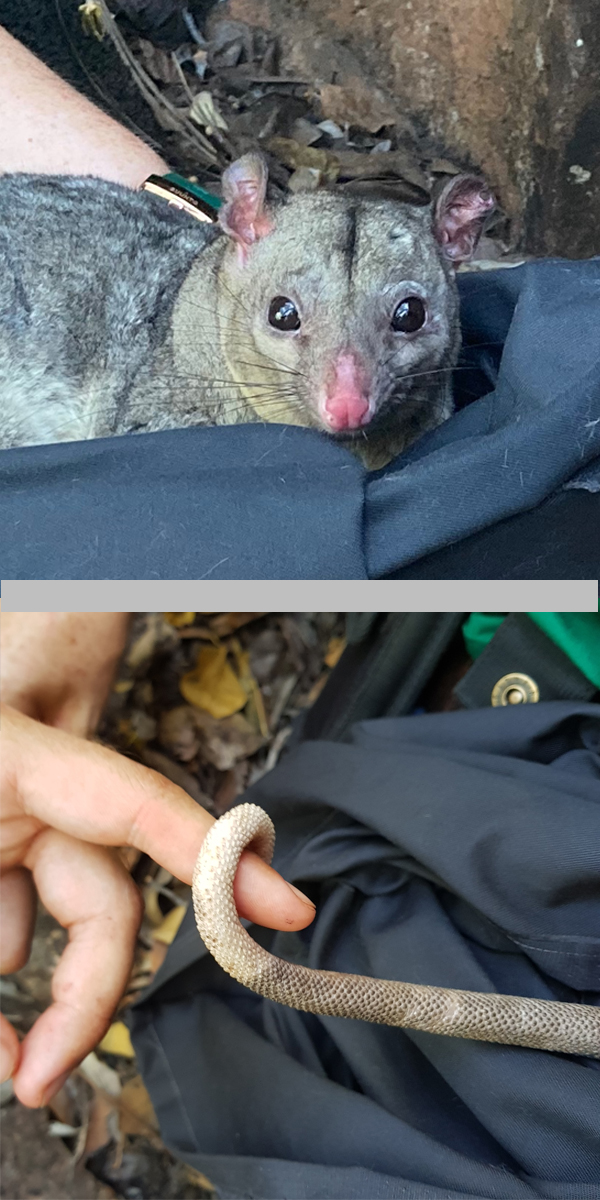Rare possum caught for first time in the NT, enticed by peanut butter and apple

There is now an official record of the scaly-tailed possum (Wyulda squamicaudata) living in the Northern Territory.
The discovery was made by Australian Wildlife Conservancy (AWC) ecologists at Bullo River Station in the state’s north west.
In 2018, a low-resolution photograph from a camera trap revealed the species was present in the area, but the ecologists had not been able to actually see one with their own eyes… until now.

Scaly-tailed possum
Scientific name: Wyulda squamicaudata
Family: Phalangeridae
National conservation status: Near Threatened
Estimated population: Unknown
Four fifths of the Wyulda’s tail is covered in scales (hence the name) and the remainder at the base of their tail is furred. Wyulda’s are pale grey with a dark stripe running down the centreline of their back. They can grow up to 2kg and have a head body length of up to 400mm.
The Wyulda is one of only three species of possum that shelter exclusively in rocks. The Wyulda inhabits very structurally complex, rocky landscapes and shelters during the day deep in rock crevices or piles. This species inhabits open woodland, closed forest and rainforest pockets. It forages mainly in trees for flowers, seeds and fruit.
-Australian Wildlife Conservancy
Before 2018, the species was only known to inhabit areas within Western Australia’s Kimberley region.
“When we first detected the possum on camera traps, that was a pretty big deal – it was the first record for the species outside of Western Australia and a range extension of about 150 kilometres,” says AWC senior wildlife ecologist Dr Eridani Mulder.
And now, they have finally laid their hands on one.
“We set around 15–30 traps along the base of the escarpment at dusk and came back before dawn to check them,” regales Eridani.
“From a total of 181 trap nights, we caught just one possum. We caught the same animal the next night also – clearly he was a fan of peanut butter and apple!”.
Catching a live possum allowed the AWC team to take a tissue sample for genetic analysis, which will provide more detailed information about the species.
“We always take great care to limit the stress on the animal through trapping, so we took a small ear clipping for genetics, and then released it back in the same place,” adds Eridani.
Bullo River Station
Bullo River Station is a working cattle station and homestead in the Northern Territory’s remote Victoria River District. It is also home to a great diversity of wildlife which is why, in 2018, the Australian Wildlife Conservancy and the property’s owners entered into a ground-breaking conservation partnership, the first of its kind in Australia.

The partnership means the AWC team can carry out conservation work alongside a sustainable cattle farming operation, with the objective to maintain and improve the status of biodiversity across the 160,000-hectare property.
Co-owner of Bullo River Station, Julian Burt, says “we are delighted with the discovery of this scaly-tailed possum.”
“It is further evidence that this style of land management partnership is not only possible, but can and does deliver great ecological outcomes.”






